[ad_1]
In 1999, the world’s first commercially available color video and camera phone arrived in the form of the Kyocera VP-210 in Japan. A year after its release, worries over the rapid rise in “up-skirt” voyeurism the phones enabled spread quickly throughout the country, prompting wireless carriers to institute a policy guaranteeing the phones they offered would feature a loud camera shutter noise that users couldn’t disable. The effectiveness of that measure is, to this day, up for debate. But the event remains a valuable history lesson on the widespread adoption of technology: new tools make doing everything easier, and not just the good stuff.
Prompt-based AI art generators are now having their VP-210 moment. Once programs like Midjourney, DALL E, and Stable Diffusion began proliferating in the summer of 2022, it was only a matter of time before users started creating and iterating on hypersexualized and stereotyped images of women to populate social media accounts and sell as NFTs. But AI’s detractors need to avoid conflating the tech’s inherent potential and value with its gross misuse — even when those misuses are blatantly sexist.
Likewise, if its proponents want to defend the AI art revolution, they need to make it clear that they are ready to have this conversation and work toward solutions. If they don’t, the movement will rightfully lose its credibility, and the maligned tech will face an even steeper uphill battle than it already does.
Social media has long held a reputation for catalyzing low body satisfaction and self-esteem in women in particular. Misuse of AI art tools has the potential to exacerbate this problem. A quick search on the most popular social media platforms (for terms we’re choosing not to reveal here to avoid encouraging their use) returns a variety of accounts dedicated to displaying AI creations depicting photorealistic women (the ones showing men are comparatively few and far between).
The images in these accounts range from tasteful and artistic to outright grotesque and pornographic. Most fall into the latter category, presenting portrayals of women that stray so far into objectification as to reach parody. While we’re including images from an assortment of accounts of this nature in this article, we’ve decided not to include identifying information about them to avoid giving a platform to those who, according to expert consensus, promote stereotypes and cause harm.
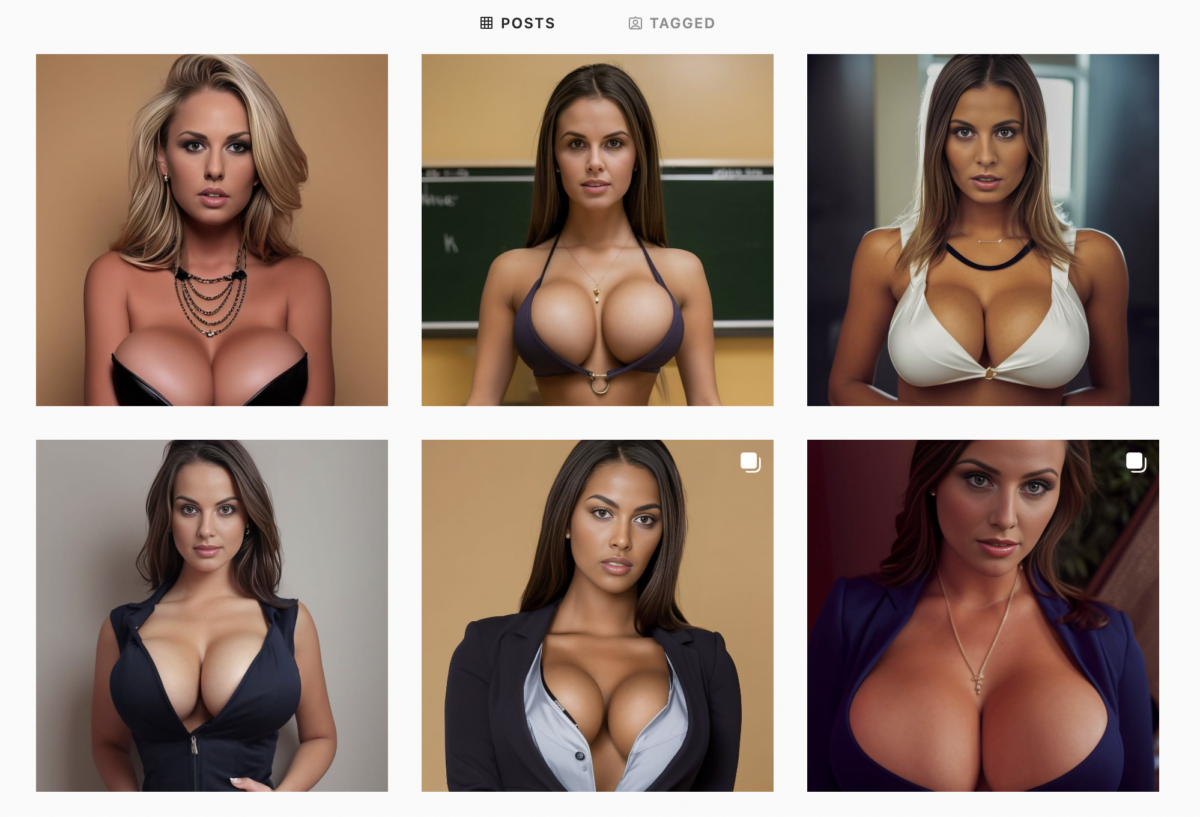
While well-intended content policies from programs like DALL-E and Midjourney prevent users from including “adult content” and “gore” in their prompt craft, the near limitless flexibility of language allows users to circumvent much of these policies’ limitations with some ease. The fact that these AI systems have inherent biases against women built into them has only made this phenomenon worse. There’s also nothing stopping individuals from building and training their own AI models, freeing them from such restrictions altogether.
Distilling the objectification of women
The conversations surrounding the objectification-empowerment dynamic of women in the fashion, entertainment, and porn industries are complex, nuanced, and vital ones, but all of them revolve around the agency and dignity of human beings. What makes the reductive and debased images of AI-generated women feel so sinister is not dissimilar from what makes deepfakes so reprehensible: the tech strips away those pesky moral hangups regarding consent and personality and distills the very essence of sexual objectification into its purest form.
On a broad scale, images produced by AI art tools that depict people often blend the intimate and the alien. Some would argue that this is even a part of their appeal, an ability to both spotlight and subvert the uncanny valley in truly artistic and thought-provoking ways.
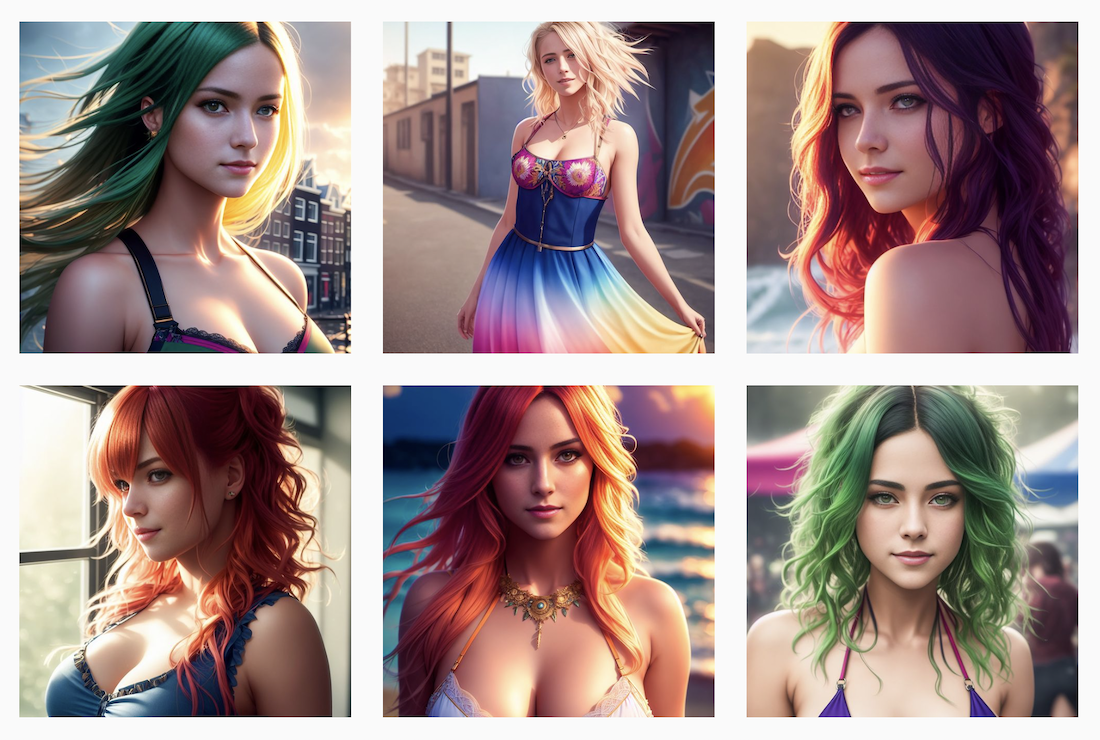
The same cannot be said of the AI-generated women so often seen in accounts on Twitter and Instagram. They are far more unsettling representations, not just because they have emerged from algorithms trained on unknown billions of images of real-life women, but because the images are constructed through the prompt-based specification of sexually-associated parts of women. The result is a strange, echoing specter of countless countenances and bodies synthesized into a masquerade of reality.
Can AI art tools celebrate women instead?
The line between objectifying and empowering blurs quickly. Several social media accounts featuring AI-generated content exist that are operated by women, for example, and claim to celebrate them in their diversity, beauty, and cultural contexts. Rather than creating and posting caricatures that have been reduced to little more than their sexual organs, accounts like these tend to present women from the shoulders up and resemble something more akin to actual human beings. This is progress of a kind, but even on such pages, most of the women depicted have strikingly similar bone structures and body types to one another, not dissimilar to the so-called “same-face syndrome” phenomenon that has plagued Disney productions for years.
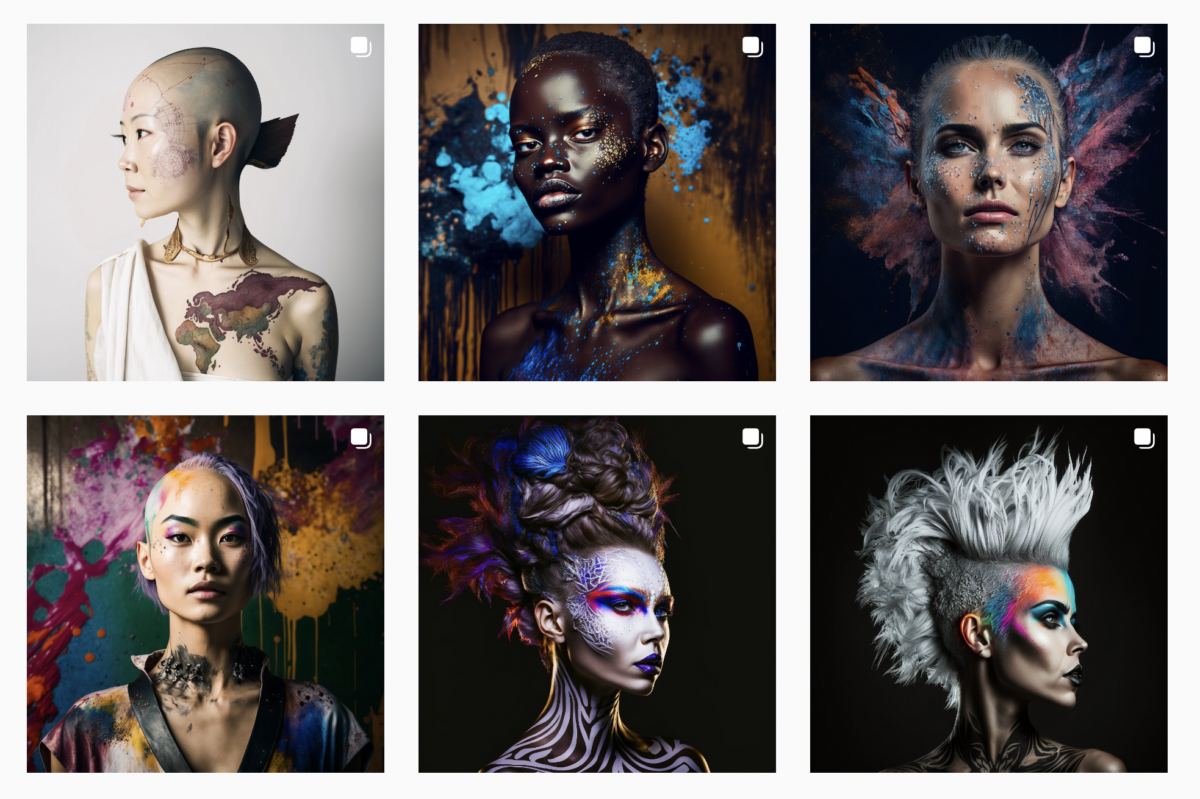
Still, these differences in degree matter. An increasing number of NFT collections are beginning to use AI in their creation, for example, and many that represent women are arguably doing so in a respectful and innovative way. Musess is one such collection, having constructed its NFTs from AI’s interpretation of artist Eva Adamian’s paintings of the nude female form. The collection, the project website states, was born of the desire to create something that showed the “borderless, inclusive, and unveiled beauty” of women.
This isn’t a new problem
Women being objectified in artistic media is nothing new; AI has simply made it easier to achieve. This is illustrated by the fact that Instagram’s algorithm quickly directs you from accounts depicting AI-generated women to others of a similar nature — only the women on these pages have been hand drawn by graphic illustrators. Apart from the stylistic differences, there is little to differentiate the two in how they perceive and present women. Just as AI art is art in a different expression, objectification is objectification, regardless of the medium in which it’s expressed.
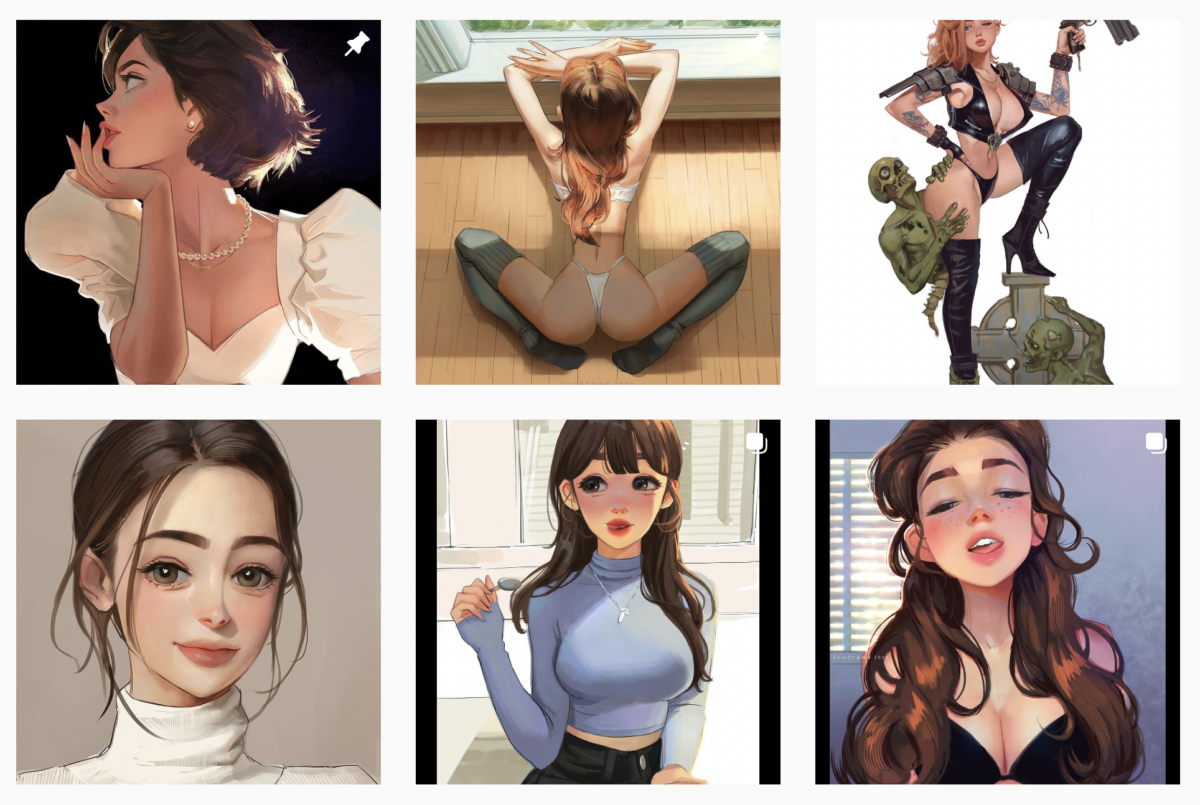
AI’s advocates need to lead the charge for change
Every technology used to create art in the past has also been utilized to depict women in a spectrum ranging from dignified to one-dimensional. AI is now the latest innovation to be used in this way. Ironically, the arrival of the complex and necessary conversation surrounding AI’s role in the objectification of women is a sign of progress. Fundamentally, the issue behind people using the tech to reduce women to their sexuality alone is no different than it always has been.
Supporters of AI and AI art tools need to keep this in mind. A common argument amongst proponents asserts that, while these tools are unfortunately being used to plagiarize artists’ work and vision, this is no reason to disqualify the technology outright or deny the good it’s doing in the world. Surely, the dissemination of tools that creatively empower billions globally must validate their existence, right?
The answer is that they do. But the other question is this: Will AI’s supporters embrace the validity of concerns that have less to do with ethics in the art world and more with human dignity and expressions of sexism?
AI art tools are going to go through a gauntlet of criticism — both legitimate and hollow — before they come out the other end flush with every other piece of technology we use in our daily lives. Until then, they need to weather the storm, even if that storm includes a proliferation of sexist images made possible as a direct result of the tools. The Kyocera VP-210 and every phone that came after it made it easier to take photos of women without their consent. Any reasonable individual can and should feel disturbed by that fact. But such deplorable behavior represents a poor knock-down argument against the idea of the camera phone itself. As with every technology, society needs to find a way to move forward with AI while working to minimize its misuse as much as possible. Now is the time for AI art proponents to lead that charge.
[ad_2]
Read More: nftnow.com

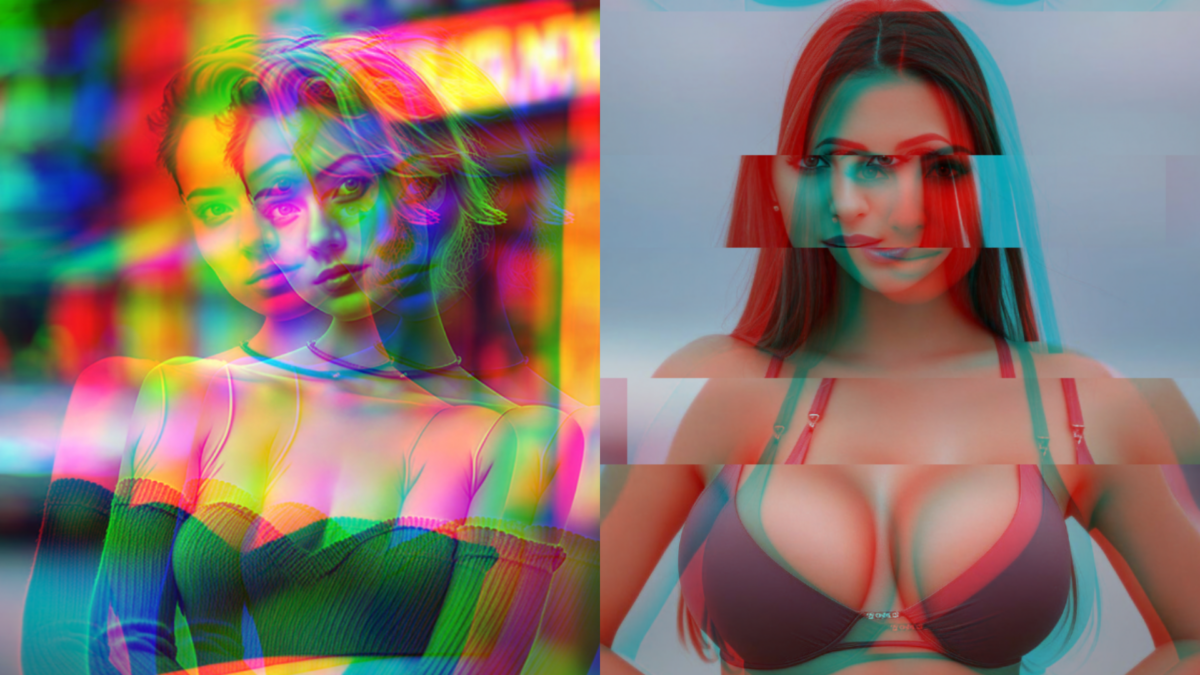







 Bitcoin
Bitcoin  Ethereum
Ethereum  Tether
Tether  XRP
XRP  Solana
Solana  USDC
USDC  TRON
TRON  Dogecoin
Dogecoin  Lido Staked Ether
Lido Staked Ether  Cardano
Cardano  Wrapped Bitcoin
Wrapped Bitcoin  Hyperliquid
Hyperliquid  Wrapped stETH
Wrapped stETH  Sui
Sui  Bitcoin Cash
Bitcoin Cash  Chainlink
Chainlink  LEO Token
LEO Token  Stellar
Stellar  Avalanche
Avalanche  Toncoin
Toncoin  USDS
USDS  WhiteBIT Coin
WhiteBIT Coin  Shiba Inu
Shiba Inu  Wrapped eETH
Wrapped eETH  WETH
WETH  Litecoin
Litecoin  Binance Bridged USDT (BNB Smart Chain)
Binance Bridged USDT (BNB Smart Chain)  Hedera
Hedera  Monero
Monero  Ethena USDe
Ethena USDe  Polkadot
Polkadot  Bitget Token
Bitget Token  Coinbase Wrapped BTC
Coinbase Wrapped BTC  Uniswap
Uniswap  Pepe
Pepe  Pi Network
Pi Network  Aave
Aave  Dai
Dai  Ethena Staked USDe
Ethena Staked USDe  Bittensor
Bittensor  OKB
OKB  BlackRock USD Institutional Digital Liquidity Fund
BlackRock USD Institutional Digital Liquidity Fund  Aptos
Aptos  Cronos
Cronos  Internet Computer
Internet Computer  NEAR Protocol
NEAR Protocol  Jito Staked SOL
Jito Staked SOL  sUSDS
sUSDS  Ethereum Classic
Ethereum Classic